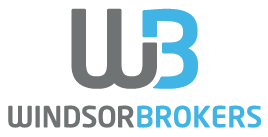US NFP above forecasts in August but unemployment rises and wage growth slows
The US Nonfarm Payrolls report showed that the economy added more jobs than expected in August, but surprise jump in unemployment and cooling wage growth tempered initial positive signal and added to expectations that Federal Reserve will not raise interest rates this month.
Nonfarm payrolls increased by 187K last month, beating expectations for 170K increase, but July’s figure was revised lower to 157K from initial release of 187K.
The overall picture was seen rather neutral as numbers stay well below 100K, which is required to signal growth, but stay below 200K for the third consecutive month and well below the average of past 12 months at 271K.
On the other side, monthly wage growth slowed to 0.2% in August (the lowest since March 2022) from 0.4% previous month and fell below 0.3% consensus, while unemployment rose to 3.8% in August, hitting the highest in 18 months, from 3.5% in July and beating forecast at 3.5%.
Although lower numbers point to slowdown, demand in some sectors, such as healthcare, leisure and hospitality, remain high, making the biggest contribution to August numbers.
August labor report completed the picture, following weaker than expected JOLTS ADP reports, pointing to cracks in so far tight US labor sector and contributing to signals of growing negative impact from high interest rates to the sector, as well as entire economy as GDP and consumer confidence also declined.
Slowdown in wage growth in August was another strong signal of cooling in labor sector and will contribute to expectations that inflation may accelerate towards Fed’s 2%.
Also, fresh rise in unemployment contributes to signals which policymakers would like to see, despite the fact that current jobless rate is still below Fed’s latest estimation of 4.1% by the fourth quarter this year.
Overall, the latest data added to expectations that the Fed is likely at the end of its rate hike cycle since March 2022, in which the central bank raised interest rates by 525 basis points to the current 5.25%-5.50% range but may keep the borrowing cost elevated for some time before starting to ease.


